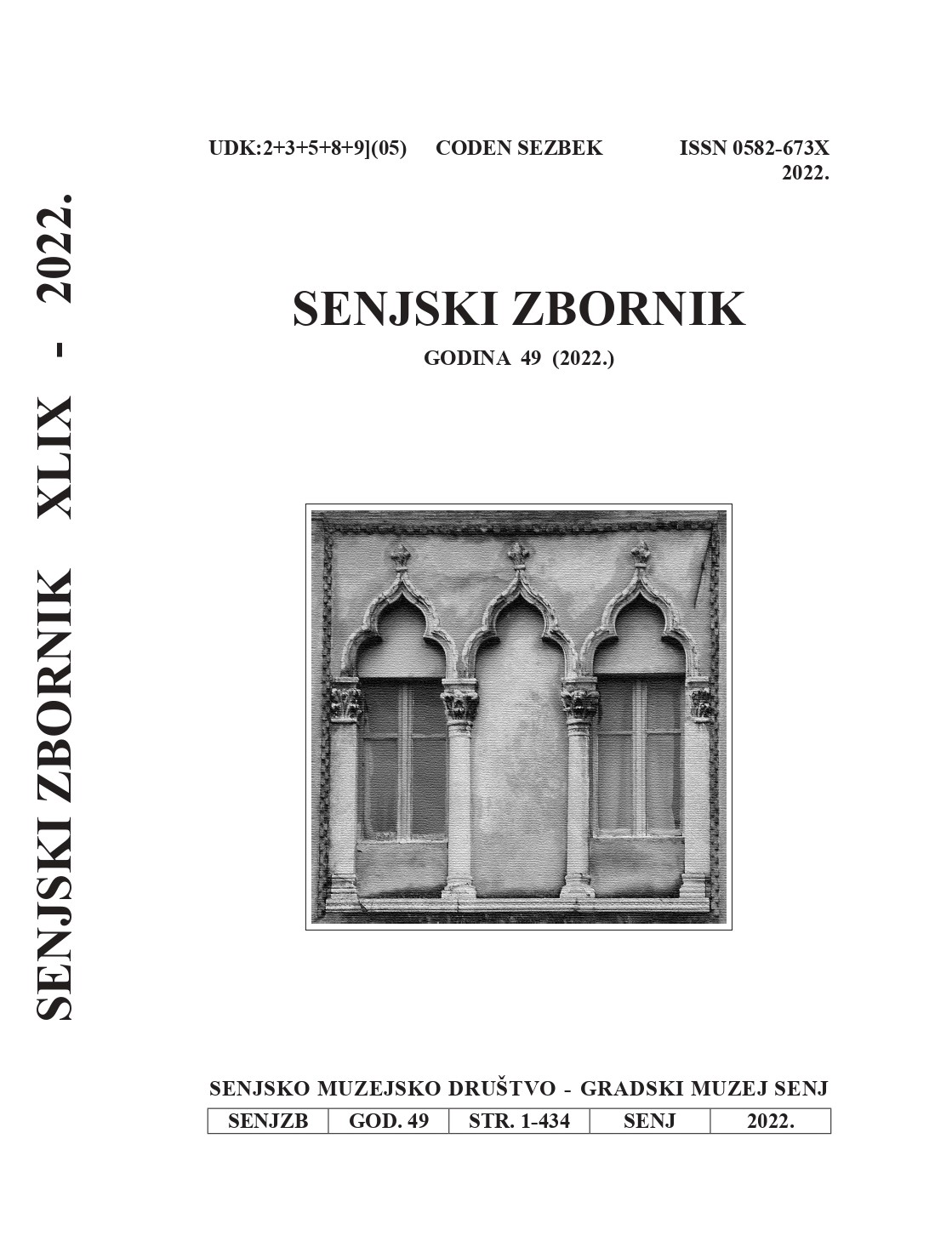Vuk Krajač (1895. – 1962.) - život i djelo
Vuk Krajač 1895 – 1962 - Life and Work
Author(s): Helena Knifić SchapsSubject(s): Museology & Heritage Studies, Preservation
Published by: Senjsko muzejsko društvo i Gradski muzej Senj
Keywords: Vuk Krajač; conservator; the Senj Museum Society; the Vukasović Palace; the Senj Town Museum:
Summary/Abstract: Vuk Krajač was a descendant of the Senj lineage of the old Krajač family, which dates back to the 15th century. He was born in Senj, in the house called Podnehaj in Nehajska Street, in 1895. He was educated at European colleges and universities, spoke several foreign languages, graduated in Zagreb and received his doctorate in maritime politics. He worked in Sušak and Antwerp, and in Belgrade he became secretary (assistant) to the minister in the Ministry of Transport and Maritime Affairs of the Kingdom of Yugoslavia. He married Rosanda Olip and they had a daughter Jelka and a son Ivica. At the beginning of the Second World War, they fled to Zagreb, where the family remained. In 1946 Dr Krajač returned to Senj, which was almost completely destroyed during the war. In 1947, he wrote and published Promemorija o reguliranju Senja (A Memorandum about the regulation of Senj), and in 1949 Elaborat o regulaciji grada i luke Senj (An Elaboration about the regulation of the town and harbour of Senj), in order to point out the problems that the town itself could not solve. In the same year, the Government of the People’s Republic of Croatia appointed him the city conservator. He systematically worked on all urban-conservation topics of the town and its structures, which have yet to become a cultural heritage: the Nehaj tower, the town walls and towers, the palaces, residential areas within the old town core, Mala Placa, the expansion of new areas for construction (residential, touristic, business), institutionalising the protection of the values of the town and its surroundings at the civic level. He gave special importance to the transport infrastructure, to which the harbour belongs, for the future development of tourism. He contacted the authorities at all levels, from professional and scientific to political, in order to collect funds for reconstruction. He will be best remembered for the reconstruction of the Vukasović Palace, the founding of the Senj Museum Society in 1950, and the founding of the Senj Town Museum in 1962, for the purpose of which the Vukasović Palace was reconstructed. After a serious illness, according to his last wish, he died in Senj in 1962. His final resting place is in the St Vitus cemetery in Senj.
Journal: Senjski zbornik - prilozi za geografiju, etnologiju, gospodarstvo, povijest i kulturu
- Issue Year: 49/2022
- Issue No: 1
- Page Range: 339-364
- Page Count: 26
- Language: Croatian

